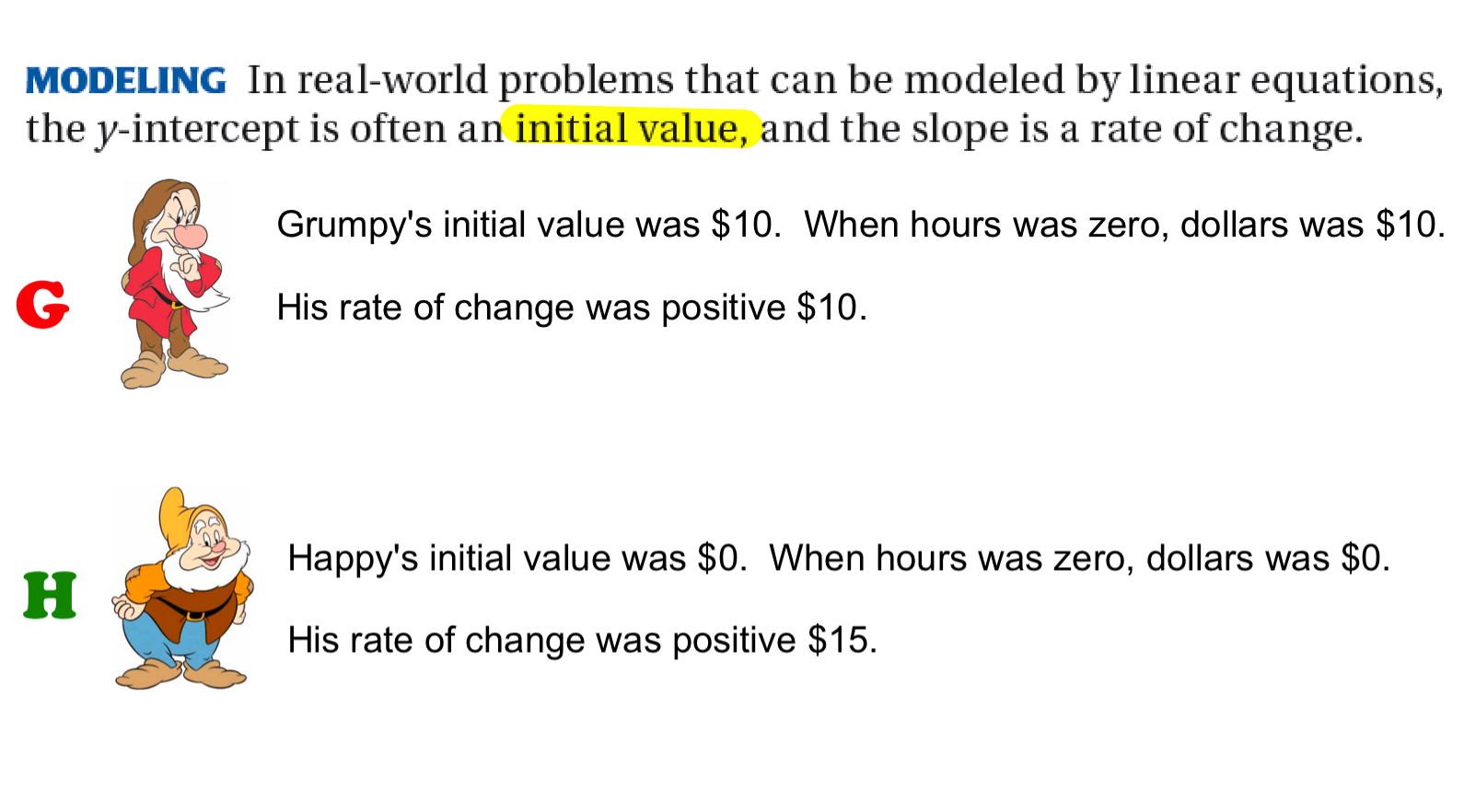Tweet me at @aanthonya if you have questions about this activity.
I find that even at the point when my 9th grade students reach High School, they still don't really "understand" even the basics of linear equations. Sure, they can remember how to calculate slope once I remind them of the slope formula, but they don't know what it means. Y-intercept.....forget it. They just don't get it.
So....I usually throw in a little problem in the first week or so where we will construct two lines using all the stuff they probably covered in middle school.
This simple example hopefully is something I can reference throughout the year as an example. The example works well for various topics, especially linear and linear systems.
These video examples are reduced in size to save space. The versions I use inclass are much higher quality and size.
version 1:
version 2:
Here are some screenshots from the SMARTBoard presentation I use to build the problem and graph it step by step.










